Pigeon Spikes – Frequently Asked Questions
As a leading bird spikes / pigeon spike supplier to homes & businesses across the world – here are some of the common questions we get asked.

What are Anti Bird Spikes or Pigeon Spikes?
Anti Bird Spikes, also known as an anti-roosting spike or roost modification, is a device consisting of long, needle-like rods used for bird control.
They can be attached to building ledges to prevent wild or feral birds from perching or roosting. Birds can produce large quantities of unsightly and unhygienic faeces, and some birds have very loud calls that can be inconvenient for nearby residents, especially at night. As a result, these are used to deter these birds without causing them harm or killing them.
Anti Bird Spikes work by reducing the area available for birds to land on. This forces birds to land elsewhere. As the birds do not come into contact with the spikes, the birds go unharmed.
Described as “the most effective (type of) stand-alone bird deterrent”, Anti Bird Spikes can be placed along ledges, walls, on top of commercial signage, closed circuit television cameras and in rain gutters, in order to prevent birds from perching on the surfaces.
They are most common in city centres and coastal areas, where feral birds are more common and more likely to come into conflict with humans.
What birds do Anti Bird Spikes repel?
Our Anti Bird Spikes are the great all rounder. They can work effectively on larger pest birds like pigeons and seagulls as well as smaller birds like Indian mynas, sparrows and starlings.
The reason they can do this is because of the way the spikes are arranged along the base. The sets of spikes are close enough together (or dense enough) along the base that small birds cannot land in between the rows.
The individual spikes are also long enough (or high enough) that larger birds cannot straddle them and get a foot hold. Some other types of spikes we sell, such as the Avipoint range, are targeted mainly towards repelling pigeons.
As such the spikes are more sparsely spaced along the base which leaves big enough gaps for smaller birds to land in between. So make sure you choose the right spike for the job.
How do you install Anti Bird Spikes?
Installing Bird Spikes is extremely easy.
- Firstly make sure the surface you are attaching the spikes to is clean and clear of any dust, debris or bird droppings. Be aware, bird droppings can carry many diseases that can cause respiratory infections so be careful when cleaning and make sure you wear a suitable dust mask.
- Anti Bird Spikes can be installed to surfaces in several ways. The quickest and easiest way is usually with a UV stabilised silicon adhesive such as Avisil.
- Apply an even bead of silicon along the entire length of the spike base. Position spike strip in the desired location and press down firmly. Repeat this process with subsequent spike strips and link on to the end of the previous strip.
- You can also use nails or screws through the pre-drilled holes along the base.
Will these bird spikes harm or injure the birds?
No.
Bird spikes are designed to create an uneven, spiky surface that birds cannot land on.
The bird sees the spikes, and as a result will not attempt to land on the ledge. These spikes also feature blunted tips so even if the birds do accidentally come into contact they will not be harmed.
What maintenance is required with these spikes?
The great thing about installing bird spikes is they are maintenance free. They offer a long-term, cost effective and maintenance free solution to deterring birds.
Life expectancy of these spikes is approximately 7 years under normal conditions
-
Sale!
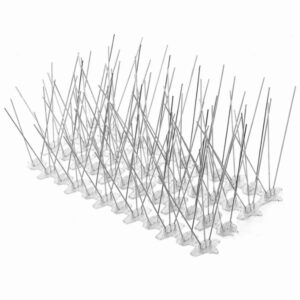
Anti Bird Spikes – Non Lethal & Environmentally Friendly (per 50cm strip)
Original price was: 450฿.200฿Current price is: 200฿. -
Sale!

Pigeon Spikes – Non Lethal & Environmentally Friendly (per 50cm strip)
Original price was: 450฿.200฿Current price is: 200฿. -
Sale!
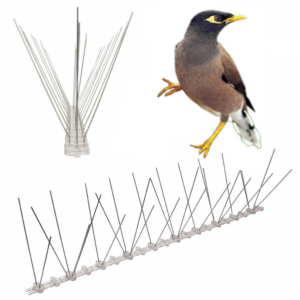
Indian Myna Spikes – Non Lethal & Environmentally Friendly (per 50cm strip)
Original price was: 450฿.200฿Current price is: 200฿. -
Sale!
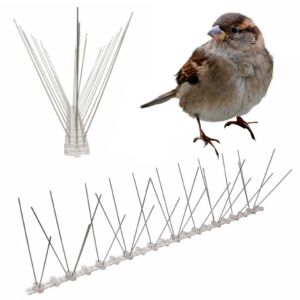
Sparrow Spikes – Non Lethal & Environmentally Friendly (per 50cm strip)
Original price was: 450฿.200฿Current price is: 200฿. -
Sale!

Gutter Spikes – Non Lethal & Environmentally Friendly (per 50cm strip)
Original price was: 450฿.200฿Current price is: 200฿. -
Sale!
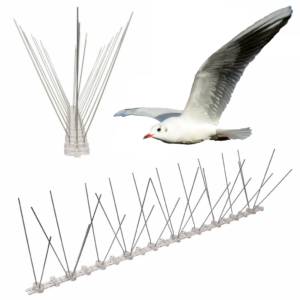
Seagull Spikes – Non Lethal & Environmentally Friendly (per 50cm strip)
Original price was: 450฿.200฿Current price is: 200฿. -
Sale!
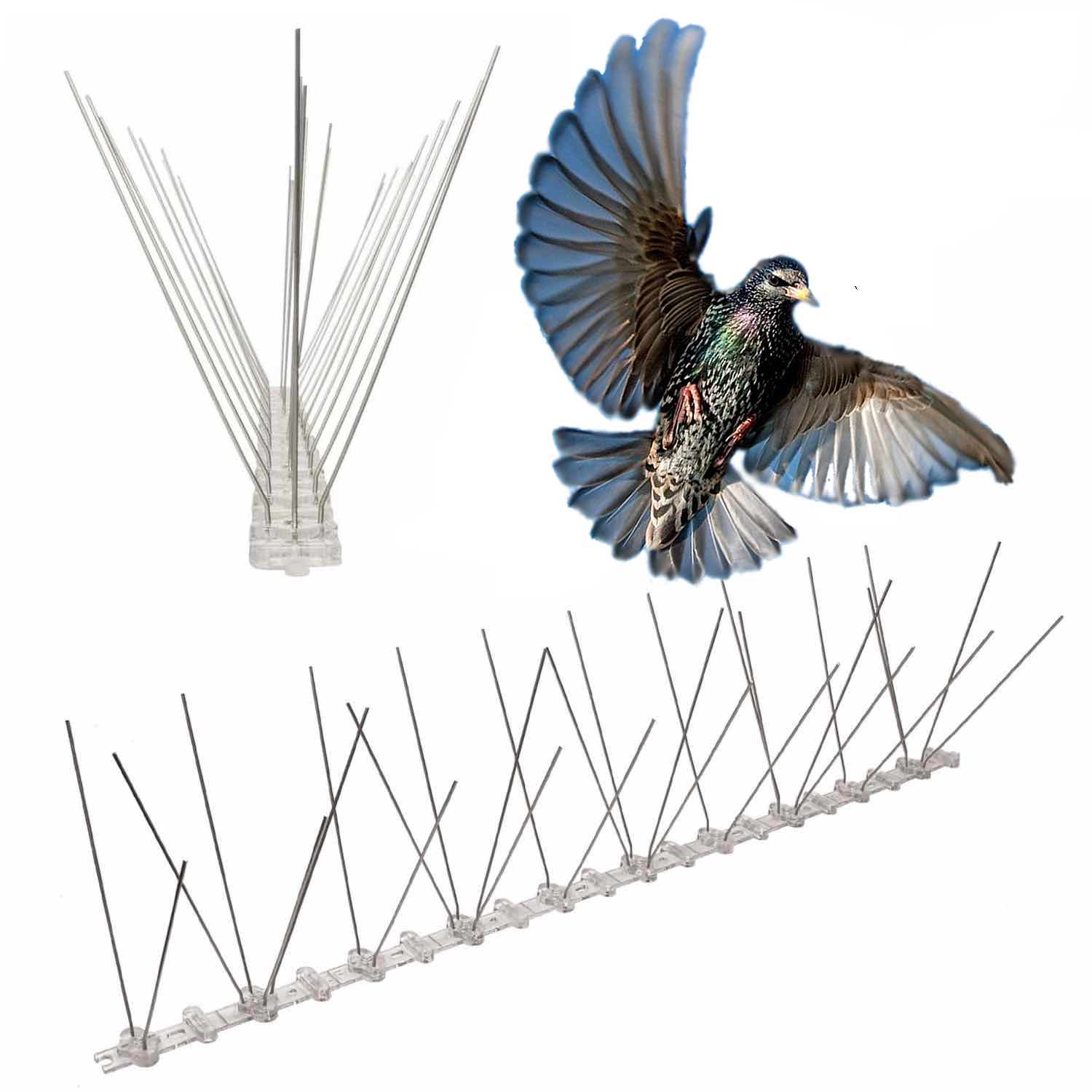
Starling Bird Spikes – Non Lethal & Environmentally Friendly (per 50cm strip)
Original price was: 450฿.200฿Current price is: 200฿. -
Sale!

Raven Spikes – Non Lethal & Environmentally Friendly (per 50cm strip)
Original price was: 450฿.200฿Current price is: 200฿. -
Sale!

Crow Spikes – Non Lethal & Environmentally Friendly (per 50cm strip)
Original price was: 450฿.200฿Current price is: 200฿. -
Sale!
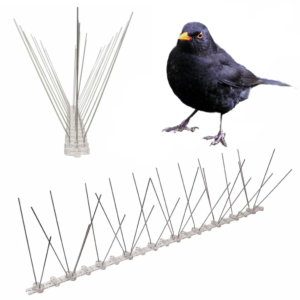
Blackbird Spikes – Non Lethal & Environmentally Friendly (per 50cm strip)
Original price was: 450฿.200฿Current price is: 200฿. -
Sale!

Fence Spikes | Pest Spike Strips For Fences | Fence Repellant Spikes (per 50cm strip)
Original price was: 450฿.200฿Current price is: 200฿. -
Sale!
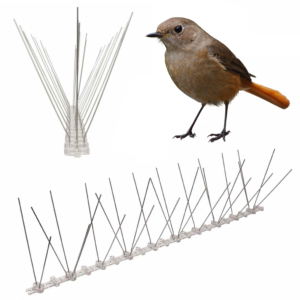
Anti-Wren Spikes | Wren Deterrent Spike Strips | Wren Repellent Spikes (per 50cm strip)
Original price was: 450฿.200฿Current price is: 200฿.
The Best DIY (Do-It-Yourself) Pigeon Deterrent
Faced with a pigeon problem, one’s initial reaction is generally to look into the pest control market for the right device to eliminate the problem.
However, one also generally tends to find that the variety of options are nearly endless, and one might spend hours and hours researching various products and their often biased reviews online only to end up even more confused then when they began their investigation.
Is there such a thing as a truly DIY pigeon deterrent, and does pigeon control necessarily have to be expensive? Where do you even start?
Given the bewildering amount of conflicting information available online, the purpose of the following article is to clearly lay out the various options for pigeon control, what kinds of situations each option works best for, and the amount of money you need to spend in an impartial manner.
For instance there are a number of highly economical options which are just as effective as some relatively expensive options that may companies are not going to talk about (because they want you to buy their products), but we are here to give it to you straight.
In order to let you skip over information that is not useful for your particular pigeon issue and location, we have organized the following information into categories based on the kind of pigeon problem that you are having.
All pigeon problems can essentially be divided into two different groups: daytime perching vs overnight roosting. Depending on which of these categories your issue falls into, there are going to be different ways of going about solving it.
In the first scenario (daytime perching), what is happening is that the pigeons are simply using your home or place of business as a temporary stop while exploiting some nearby food source. In the second (overnight roosting), what is happening is the pigeons are using your home or building to breed and nurse baby pigeons.
The best way to figure out which issue you have (if it is not already immediately obvious) is to observe when your pigeons are active.
If they seem to be around pretty much all day long, then what you have is more likely merely daytime perching. However if your pigeons seem to be more active around dawn and dusk, then it is more likely the case that you have some overnight roosters spawning new pigeons.
Once you have determined which of these two types of pigeon issues you have, you can skip to the appropriate section to see which deterrents are best suited to dealing with which kind of problem.
Daytime Perchers
If your investigations have shown that your pigeons tend to be around only during the daytime, the next step is for you to understand better what is attracting the pigeons to your building. Why? Because if your pigeons have found a reliable food source nearby, then your pigeon spikes are merely going to displace them, and they may, for example, merely move from your ledges to your roof tiles.
With this type of daytime perching problem, as there are so many places that pigeons can use to perch – from windowsills, exposed pipework, guttering, to just about anything that protrudes from your home or place of business – you may find with frustration that each of your deterrents simply relocates your pigeons from one place to another.
If you want to remove the problem once and for all, you may find that you need to install deterrents in multiple areas all at once.
In some cases, however, you may be able to deal with the problem at the source (i.e. the food source) rather than papering your entire property over with spikes and so forth. If your building is located near a fast food outlet or other type of restaurant, the pigeons are more than likely feeding out of its dumpsters.
In this case telephoning your Environmental Healthy Department or town council may be able to resolve the issue. Likewise if the problem is resulting from individuals feeding the pigeons, then you could also contact your town council about the problem. Although they may not actually do anything about it, it is worth a shot before investing in pigeon deterrents for your home since this avenue could eliminate the problem altogether right at the source.
If, however, you are experiencing pigeon issues in a suburban neighborhood then it is more than likely that they are flocking to some sort of bird feeder meant for prettier birds in one or more of your neighbor’s gardens. In this case it would be easiest to simply speak to your neighbor or neighbors directly. Keep in mind that they don’t need to get rid of their bird feeder’s altogether, they just need to get the right kind of feeder and set it up the right way so that only the pretty, welcome birds can get at the food.
Overnight Nesting and Breeding Problems
If, on the other hand, your investigations discover that your pigeons tend to appear more in the early morning, late afternoon, or early evening, then you more than likely have an overnight roosting issue. Another sure sign that your pigeons are roosting overnight is large piles of pigeon guano.
While there will be some guano left behind by day visitors, the volume will be much higher in cases where the birds are perching in the same spot all night long. In this case you cannot avoid installing some sort of deterrent any place which pigeons are able to build nests on your property. Once again, it is very easy to simply relocate your pigeons from one area of your property to another, unless you take measures to pigeon-proof your entire property at once.
First you will have to determine what areas the pigeons are roosting at (the guano should make it quite obvious). However in some cases your pigeon problem could be coming from an interior nook or cranny (say, up underneath the roof or a second-floor porch or balcony).
In this case the signs might not be so obvious, and you may have to investigate more closely or any small holes or nooks which have space enough for a pigeon nest. If there are pigeons in any of these holes or nooks, you should be able to smell them once you get close enough even if there isn’t any obvious physical evidence.
Keep in mind however, that you should not in these cases simply block up the hole to trap the pigeons inside, partly because it is illegal, and partly because the pigeon carcasses will quickly become infested with maggots which will cause you an even more serious health and safety issue. If you don’t think you are able to humanely remove any pigeons from your property then we advise that you contact an organization like the Pigeon Control Advisory Service International.
However, if you are lucky and your property doesn’t have any hard to access nooks or crannies, then pigeon proofing your building should simply be a matter of setting up some sort of deterrent or obstacle to force your pigeons to relocate as well as to prevent any new pigeons from building new nests. Pigeon spikes, or anti-roosting spikes are a fairly economical as well as humane (they aren’t meant to pierce the pigeons, they are only meant to prevent them from landing or building nests) option.
